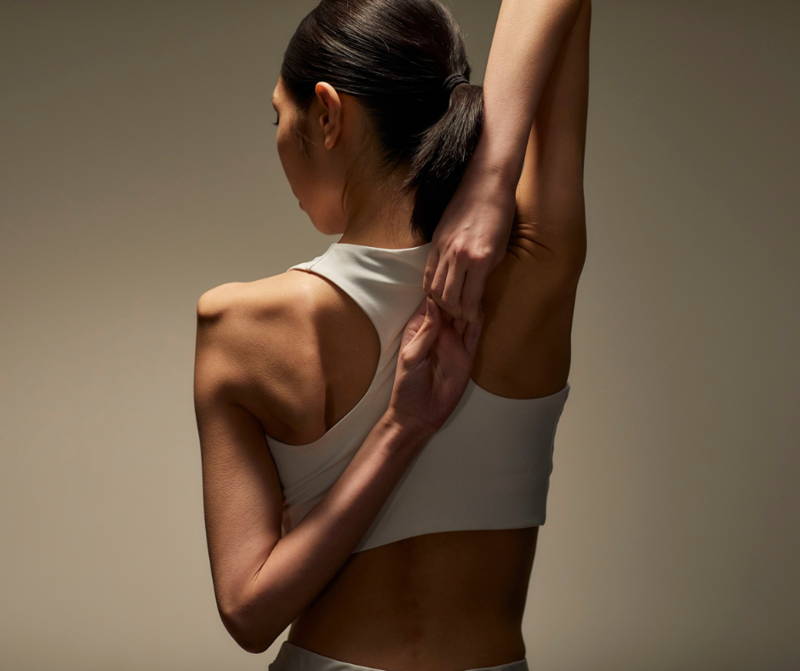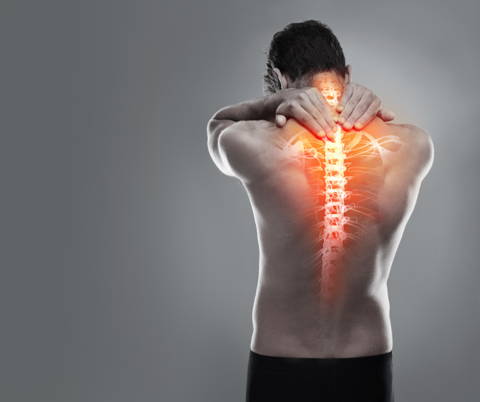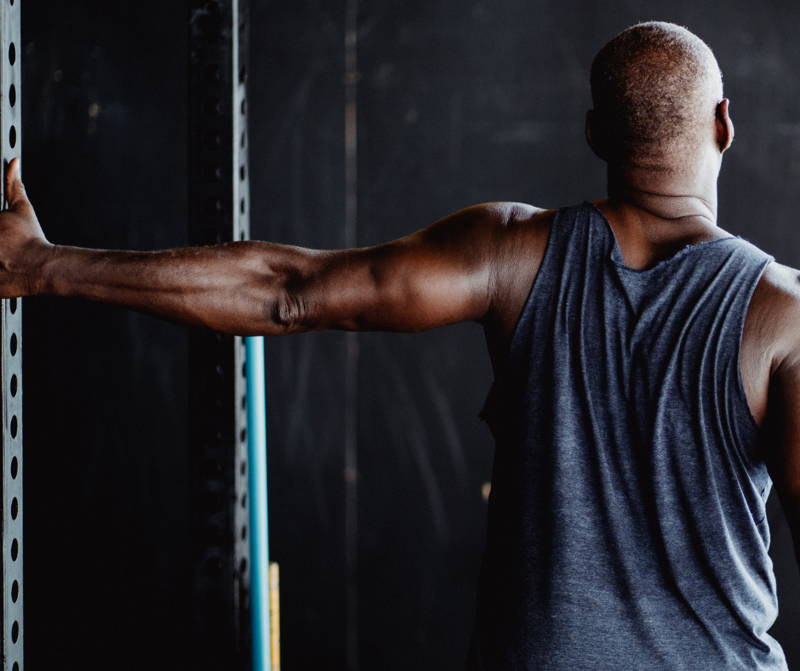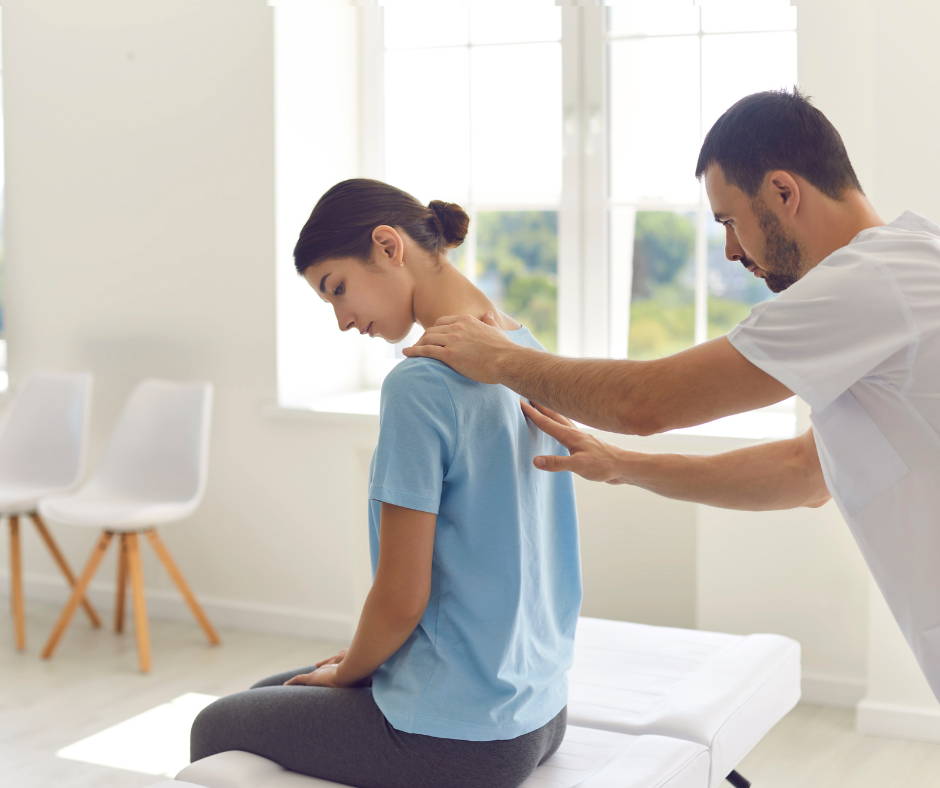

By Holly Grace Callis | Published on May 12, 2025

Upper back pain can sneak up on anyone. Maybe you’ve spent a long day hunched at a desk. Maybe you carried a heavy bag on one shoulder or slept in a strange position. Either way, that deep ache between your shoulder blades or stiffness in your neck and upper back area is hard to ignore.
This kind of tension often builds slowly. Holding one position for long periods—like sitting at work or scrolling on your phone—can leave the upper body feeling tight and sore. The muscles in your upper back work hard to support your spine, your head, and your arms. And when they’re overworked or under-stretched, discomfort sets in.
The good news is that you can help relieve this pain at home with a few simple stretches for upper back pain. These moves are gentle, easy to learn, and designed to help release muscle tension in the upper back and shoulders—no equipment or intense exercise required.
Let’s explore how these stretches work, why they matter, and how to start adding them to your daily routine.

The upper back, or thoracic spine, sits between the neck and lower back. It supports the rib cage, anchors the shoulder blades, and helps keep the upper body stable. Despite all this work, it often gets overlooked—until it starts to hurt.
Poor posture is one of the biggest culprits. Sitting with your head forward, slouching over your keyboard, or leaning into your phone causes the upper back muscles to work harder than they should. Over time, this stress leads to muscle tension, soreness, and stiffness in the mid back and neck.
Pain in this area can also come from long periods in one position, such as working from a chair without proper back support. Even something as simple as carrying a child on one side or reaching awkwardly can cause strain across the upper back and shoulders.
For some people, chronic pain becomes part of daily life—especially if core muscles are weak or there’s limited flexibility in the spine. That’s why stretching matters. When you stretch the upper back regularly, you create space for the spine, improve mobility, and ease tension that builds up from everyday activities.

Stretching does more than make you feel looser. It gently lengthens tight muscles, improves circulation, and reduces stiffness. The goal isn’t to force your body into extreme positions. It’s to invite movement back into areas that have been stuck or overworked.
You don’t need a full workout. Even simple stretches—done mindfully—can help relieve pain and reduce pressure across the shoulders, back, and neck.
Stretching also supports posture. By releasing tight muscles in the chest, shoulders, and spine, your body can naturally sit taller without strain. And when your posture improves, so does your comfort.
Before trying these stretches, take a moment to settle into a comfortable starting position. Whether you’re standing, sitting, or on the floor, aim to keep your feet flat, your arms relaxed, and your spine long.
Move slowly and breathe deeply. Don’t rush through any exercise. Each stretch should feel like a gentle pull—not a sharp pain. If you feel uncomfortable, ease out of the movement and rest.
If balance is tricky or you’re new to stretching, use a stable surface like a wall or chair for support. And remember: flexibility builds over time. What feels tight today may feel more open next week.

Let’s walk through a few of the most effective stretches to help ease upper back tension and support healthier posture. Each one is designed to target the upper back muscles, shoulder blades, neck, and chest.
This is a calming, restorative stretch that gently opens the mid back and hips.
Start on your hands and knees. Shift your hips back toward your heels, reaching your arms forward on the floor. Let your forehead rest down and breathe slowly. To target the side body, walk your hands to the right and then the left.
If your upper back feels especially tight, try placing theCallixe Thera Pillow under your chest for gentle support. This can help deepen the stretch while keeping your upper body relaxed.
A gentle movement to warm up the spine and ease shoulder tension.
Sit upright in a chair with your feet flat on the floor. Place your hands on your knees. Inhale as you arch your back, lift your chest, and bring your head slightly back. Exhale as you round your spine, tuck your chin, and pull your belly in. Repeat slowly for several rounds, matching your breath to the motion.
This movement helps unlock stiffness across the back muscles and neck, especially if you've been in one position for a long time.
Targets the upper back, shoulders, and rib cage.
Begin on all fours. Slide your right arm under your left arm, palm facing up, until your right shoulder and temple rest gently on the floor. Keep your hips stacked and your left hand planted for support. Hold, then slowly return to the starting position and repeat on the opposite side.
This creates a deep stretch in the shoulder blades and mid back, especially useful for desk-related tension.
Opens the chest and supports posture by relieving tightness in the front of the upper body.
Take a standing position beside a wall. Extend your left arm straight out at shoulder height, palm against the wall. Slowly turn your body away from the wall until you feel a stretch across your chest and left shoulder. Hold, then repeat on the right side.
This chest stretch counteracts the rounded shoulder posture that often leads to upper back pain.
A self-massage that helps release knots and improve mobility.
Lie on your back with a foam roller placed under your upper back, perpendicular to your spine. Cross your arms over your chest or support your head with your hands. Slowly roll up and down a few inches, pausing at tender spots. Focus on the upper back area, avoiding the lower back or neck.
Simple, effective movements to release shoulder tension and wake up tired muscles.
Stand or sit with your arms relaxed. Slowly roll your shoulders forward in a circular motion, then reverse. Lift your arms straight out to the sides and make small, controlled circles, gradually increasing the size.
These movements activate the upper body, improve blood flow, and gently stretch the shoulder blades and neck.
Stretching brings relief, but adding light strengthening exercises is key for preventing future pain. When your core muscles and back muscles are strong, your posture naturally improves—and your body doesn't have to work as hard to stay upright.
Try exercises like wall slides, resistance band rows, or simple arm lifts to engage the upper body without strain. A physical therapist can also guide you through a tailored program based on your needs, especially if you’re dealing with chronic pain or previous injuries.
Consistency is more important than intensity. Aim to stretch for 5 to 10 minutes each day—especially after long periods of sitting or at the end of your workday. You don’t need to do every stretch every time. Even one or two stretches can make a difference when practiced regularly.
For added support, many people use theCallixe Thera Pillow after stretching. Its contoured shape is designed to cradle the upper back, helping muscles relax and promoting deeper rest. Whether you use it after a stretch session or as part of your evening wind-down routine, it’s a simple way to extend the benefits.

If your upper back pain is sharp, persistent, or affecting your daily movement, it’s worth speaking to a professional. A physical therapist can help identify what’s causing the pain and create a safe, personalised treatment plan.
Seek medical attention if you notice tingling in your arms, weakness, or pain that radiates to the chest, neck, or legs. While many cases of upper back pain are related to posture and muscle tension, some may need further assessment.
Upper back pain doesn’t have to be something you live with. With a few simple stretches, small posture tweaks, and the right support, it’s possible to feel lighter, looser, and more comfortable in your body.
The goal isn’t perfection—it’s gentle progress. Daily movement, even in small doses, helps your body recover from long periods of stillness and keeps your spine, shoulders, and muscles working in harmony. Start small, stay consistent, and give your body the care it needs to feel better each day.